I am on a journey, my journey started a long time ago and it continues today. This journey has taken me from my grandmother’s plastic-covered table cloth to where I am today. I continue to build my gongfu. A gong is a Chinese tea service or set.
You may not need a tea pet, but you will want one. A tea pet could appear to be something not really needed. Once you understand the tea pet’s purpose you may see a tea pet in a different light.
Part of the gongfu is a tea pet. It may seem like a minimalistic part of the tea set but it’s a very big and fun part to those who raise a toast to our tea pets. When you run into someone who has a tea pet then you know you have found yourself another tea lover.
History of the tea pet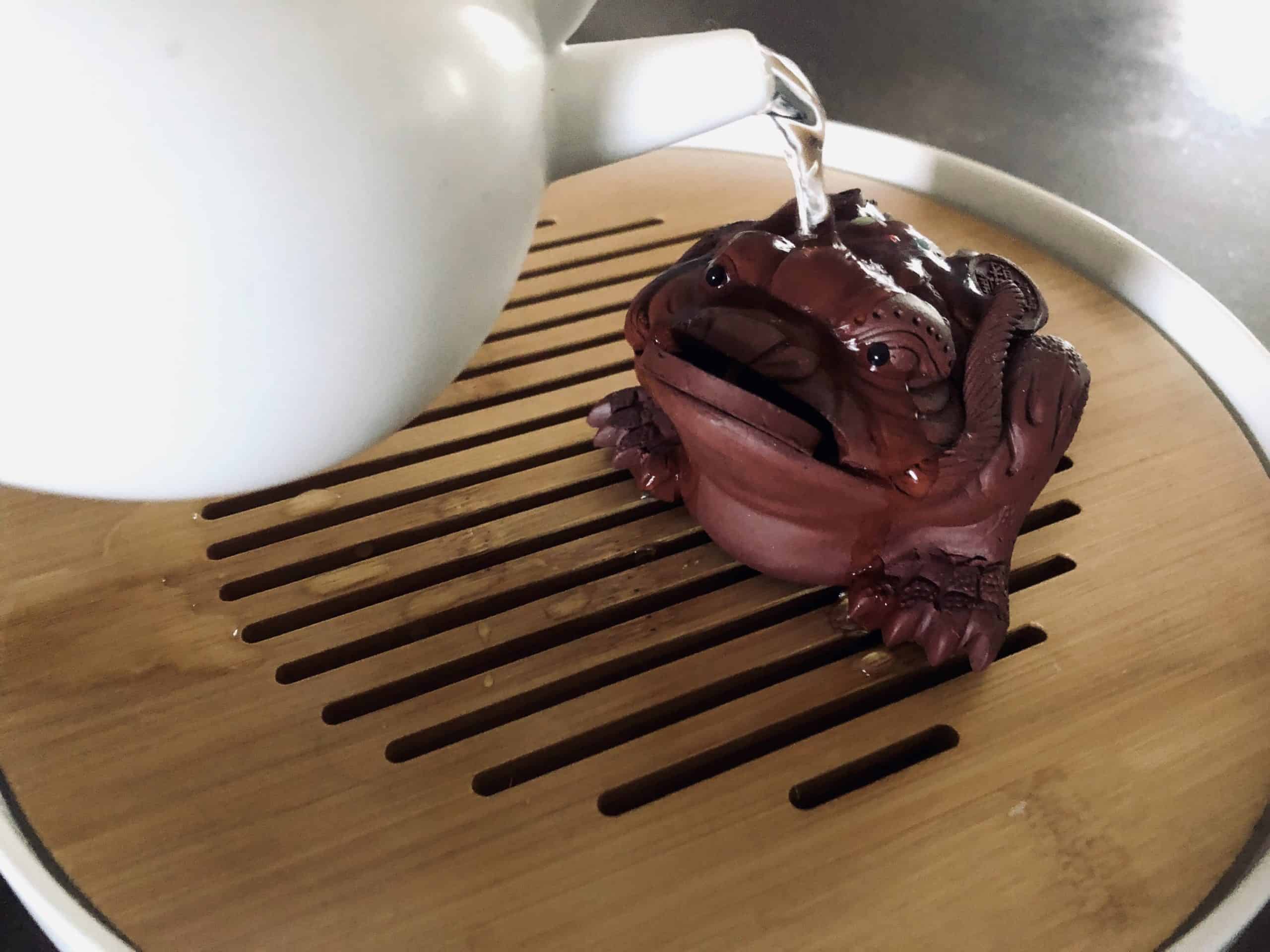
The tea pet has been part of the tea ceremony for many years. The tradition of tea pets began with the Yang Dynasty. The years were 1206 – 1368 A.D. The name used to be tea lovers’ pets which was more accurate. Today it’s called a tea pet.
Yet, the ancient Chinese scholars believed in the saying “excessive attention to trivia saps the will”. There is very limited literature on the development of tea pets in Chinese history. We do know they were developed as a mascot for tea lovers.
So we the tea lovers charged with“raising” our tea pets. We do so during the tea-making time by pouring tea over the pet. By pouring tea over the clay in time, the tea will wear on our tea pet.
The birthplace of tea pets, Yixing, was first famous as the birthplace of “Yixing clay” in the Song dynasty. The teapots much like the tea pets were made at the same time. They are not glazed and have an almost sandpaper rough feeling to them.
A Tea pet is handmade using Zisha (Yixing clay) and unglazed, so it is usually in the natural color of Yixing clay. There are three kinds of Yixing clay: purple clay, red clay, and green clay. A tea pet can be made of either of one of these Yixing clays, or a mixture of two clays to produce different colors.
Tea pet design
The first tea pets were made from extra (or scrape) pieces of clay. The teapot, cups, and pet were then sold as a set.
A tea pet made of clay. Modernization has caught up with it and tea pets are created from all sorts of materials. My favorite tea pets are made with clay. They are more earthy and the way they absorb the water is meaningful.
The clay represents the Yuan Dynasty (1206-1368). The tea pets at that time were made from the clay present during that time: Yixing clay.
A tea pet is handmade using Zisha (Yixing clay) and unglazed, so it is usually in the natural color of Yixing clay. There are three kinds of Yixing clay: purple, red, and green clay. A tea pet can be made of either of one of these Yixing clays, or a mixture of two to produce different colors.
With the development of technology, it is not hard to find alternatives to Yixing clay. The material to make tea pets and the production is still concentrated in the Yixing region.
Some alternatives are:
Purple clay – is the principal clay, which turns red-brown or dark-brown after firing. The artisan often adds iron clay to achieve a better color effect.
Red clay – also known as “Stock Yellow”, has a much higher contraction percentage than purple clay. It shows a vermillion color after firing. Because of its high contraction percentage, red clay is more suitable for making small-sized objects like tea pets, and teapots.
Green clay – has a color of off-white after firing. The most expensive and rarest of the clays.
Why a tea pet
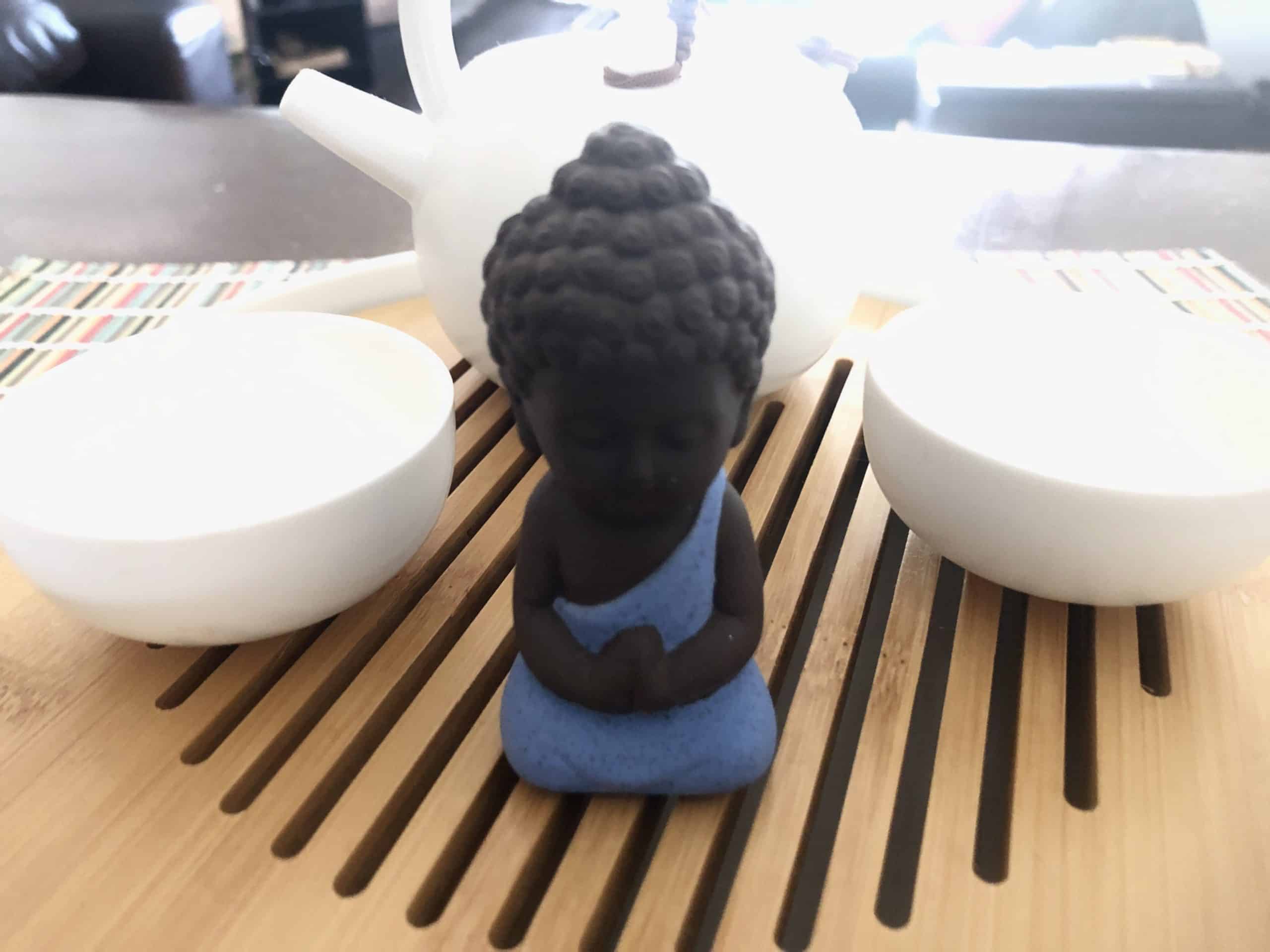
When you love tea, you love all things tea. A tea pet is no exception. To answer the questions: Why a tea pet? Why not!
Kept next to our tea collection for good luck and as a part of the tea ceremony. During the tea ceremony tea is spilled over the tea pet for good luck. Some believe as you nourish the tea pet with water you are nourishing the soul.
Some tea masters believe when we adopt a tea pet it has no soul. Pouring tea over it, which is believed to have a soul, in turn, gives the tea pet a soul. Others believe you are raising your tea pet as you pour water and tea over it.
Some tea pets change color. The principle is very similar to you offering the tea pet water the water flows over the tea pet and it changes color. Some tea pets change color 100%. Others have selected areas that change. These tea pets are generally made out of a resin that is sensitive to the water’s heat. As the tea pet cools down he will return to his original color.
A tea pet can be an animal, person, or object. One other thing they are unique. Individuals pick tea pets that are a reflection of their own personalities. Tea pets were first made from excess or leftover clay from the creation of a teapot and cup. Today you can find tea pets made of other materials like porcelain or china.
Tea pets should be small in size, they sit in the corner of the tea table and await the honor of being watered. Feng Shui can also dictate where a particular tea pet should be placed.
Tea pets are also molded into zodiac animals or Chinese mythical creatures. Those creators can be dragons, Pixiu, or Qili. They symbolize good luck, fortune, and happiness. Historical or mythical characters such as Guanyin, Maitreya, and Zhu Geliang are also tea pet forms.
While it is called a tea pet the designs can be human, symbols of vegetation, or mythical. Some of the more popular designs and their meaning are:
- Golden Frog w/ coin – Fortune (he has only three legs)
- Bats – Lucky, Prosperity, and wealth
- Pigs – Honesty and good luck
- Dogs – good luck
- Birds – wisdom, and happiness
- Elephants – peace and strength
- Monkey – carrying a baby on the back – good luck
- Turtle – Longevity
- Mythical Characters – happiness, treasure, or good wishes
- Buddha of the future – happiness
- Carp – Good luck
- Dragons – Power and strength
- Qilin – Kindness and good luck
- Pixiu- Fortune that does not end
- Chinese cabbage – Fortune is coming
One of the most popular, pee-pee boy. Pee-pee boy is the most representative and popular figure among tea pets. He is about 3 inches tall with a red-brown color.
Pee Pee Boy (and other watering tea pets)
The most popular figure of the tea pet is the “pee-pee boy”, which is used to judge whether the water is hot enough to make tea.
The principle behind the pee-pee boy is the thermal expansion of air. He is then designed to be hollow with only one tiny opening. The opening is so that water can flow into the pee-pee boy at a slow pace. The water will not drip out until enough hot water is then poured on its head. When hot water is then poured over its head, the air in the pee-pee boy expands. This results in the water being squeezed out through the tiny opening.
Results are based on thermodynamics and fluid mechanics principles. These results have been verified. The capability of such a device could be used to measure temperature. With this feature, the pee-pee boy soon became the most popular figure in tea pets. More recently artisans are utilizing this technology on other tea pets. Tea pets such as water-breathing dragons or a water-spraying tortoise. This provides more choices for tea lovers.
The watering tea pet’s ability to judge the water temperature is its most useful quality. To do this, a tea lover immerses it in cold water until it’s filled up. Then shakes it to make sure it’s filled at least 50 percent with water. After that, hot water is poured over the tea pet and the water will squirt out of the water is hot enough.
The hotter the water, the further it squirts. Cool, huh!
The Gong Fu Ceremony
Items needed:
- Bamboo perforated tray – this holds your instruments when brewing to allow water to drip down to the tray below.
- The tools (preferably bamboo)
- Measuring cup – measure tea
- Tongs – to move cups so as not to touch them
- Tea needle – Scrape teas off the sides of the pitcher
- Towel – to wipe cup and pot dry
- Hot water –washing and heating cups and brewing the tea
- Teapots (Gaiwan) are made of clay, porcelain, or glass
- Teacups made of clay, porcelain, or glass
And of course, a tea pet, what is it? Read this article about the importance of a tea pet.
Now Let’s Brew
Place all items on a tray, I personally do not use the tongs to move the cups but I do use them to place my tea into my Gaiwan.
Pour hot water into Gaiwan and cups wait a moment and pour out. This warms and prepares the cups for the tea.
Pour hot water into Gaiwan again over the leaves in a circular manner.
The trickiest part is how to hold the Gaiwan. Put your index finger on the lid and the other fingers and thumb to hold the cup, pour from there.
You want to pour that first water out. This is the washing or awakening of the tea leaves and is not considered drinkable.
Soon after pouring more hot water into the Gaiwan, this should be done again in a circular motion when putting the lid on it is ok to allow water to spill out over the top.
Brew 2-5 minutes
Pick the teapot up and wipe it off, then pour tea into the cups back and forth to evenly distribute the temperature and the tea.
Repeat.
Your water is heated and poured into the gaiwan and allowed to steep, the small cup is swirled and then shared with others.
There is a whole ceremony that goes along with using a gaiwan that we will get into in a later article. But you can peek at it HERE
Are there any tea pet cautions
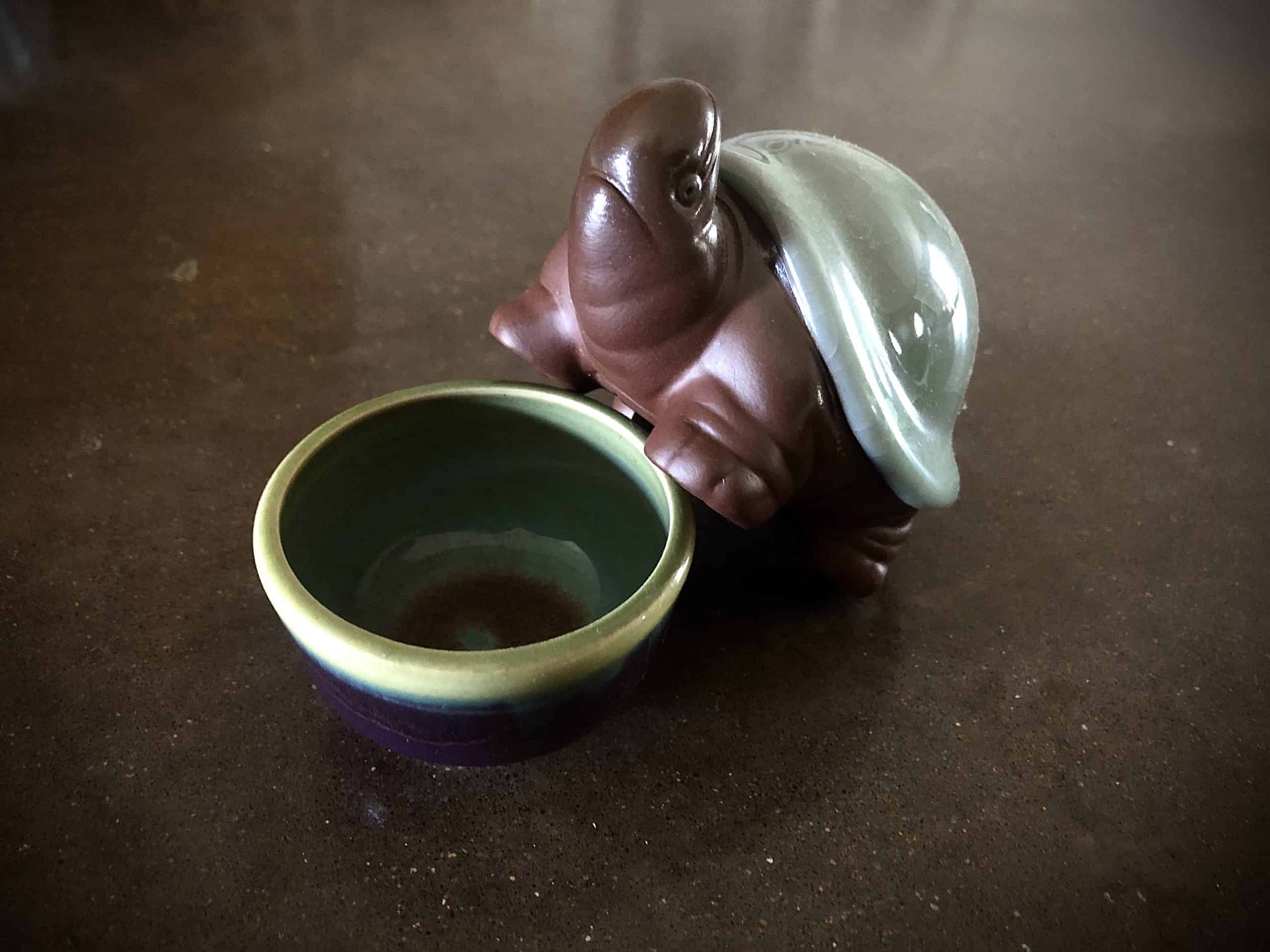
There is not a lot of caution in taking care of your tea pet. There are a few rules to follow.
Handling – Tea pets will break, so handle with care. I also believe a tea pet should be handled with respect. When you water your tea pet it is part of a ceremony. You are honoring your tea pet by offering it water.
Washing – There is no need to wash your tea pet. Do not use dap or detergents. Tea pets are to be offered water and sometimes tea. In time your tea pet (especially if clay) will change color as it begins to wear from the offerings. The tea pet will also become glossier and have an aroma of tea.
Conclusion
I found my first tea pet at a tea show in Missouri and since that time I have been curious about the meaning behind them. I’ve researched to know more about them and have shared that knowledge with you. My first tea pet was the three-legged frog with the coin in his mouth. The second a small Buddha and the third a gift from a Reddit fan a turtle. I have my eye on a few more. What is your favorite?
Tea pets are fun and cute. In Chinese culture, they have a meaning, an honor, and a place in the Chinese tea culture. Some tea pets will make us think, while others will make us smile. Our personalities as well as our teas will rub off on the tea pet as they grow to be an important part of our tea ceremony.

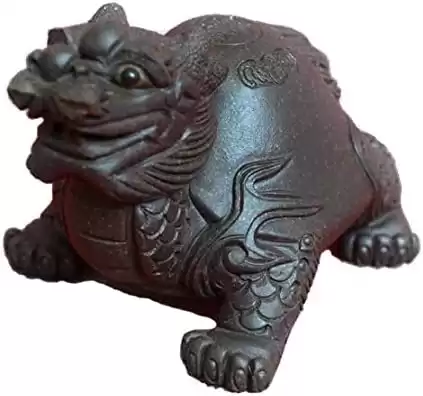
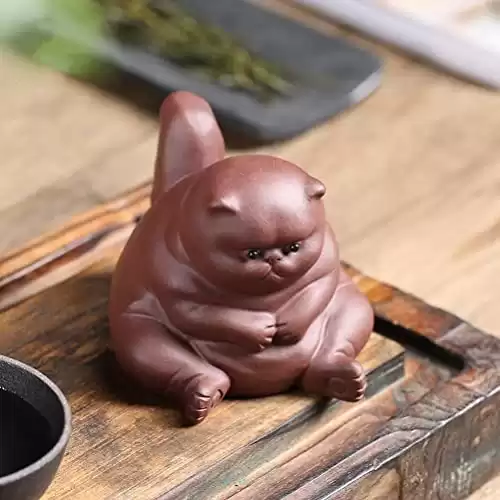
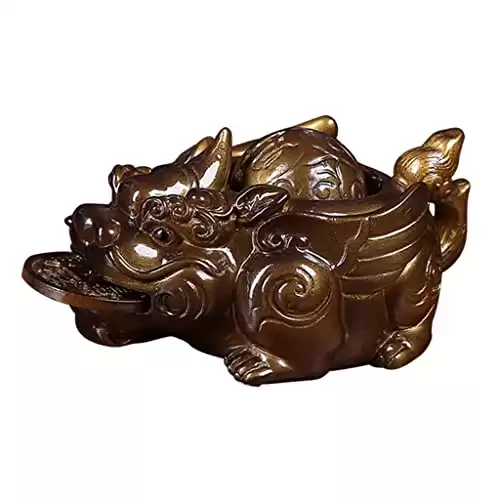
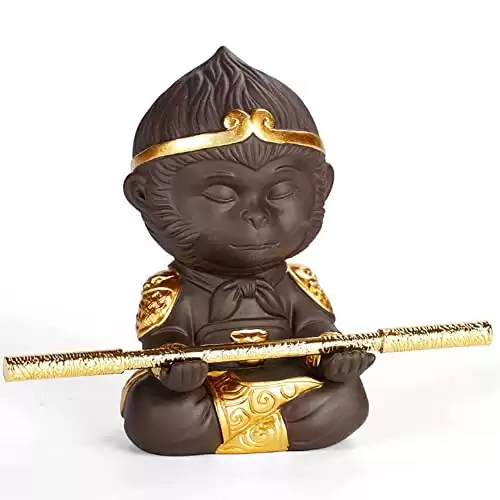
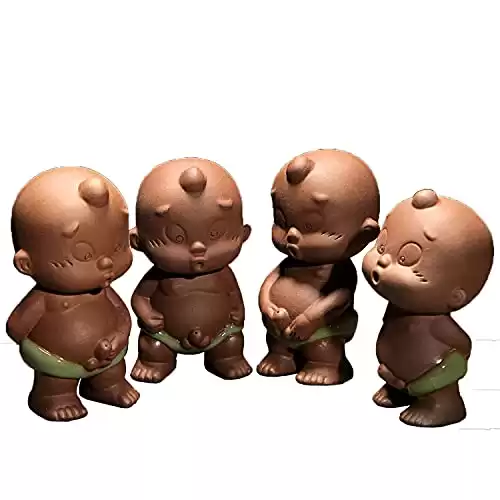

4 thoughts on “Tea Pet 101: Everything You Need To Know”
Evening, Lisa B.,
Learning a lot here. Thanks! FYI: Upton Tea is my favorite loose tea provider. No, I am no employee or relative.
Tea question: Do you know who or where I can find this info?
1968-69, while in combat, South Vietnam. We came upon an abandoned tea plantation,(it was even on our maps-1950s). Much overgrown, nature was reclaiming her forest. A small building, open on all sides, tin roof, concrete! floor. Eight tubs or kettles, IDK, were set into the floor. ??? Imagine a teacup, with it’s rim level with the floor. Since then, I have looked for the answer to “What are these iron tubs for?” Fermenters? Roasters with containers above each tub?
I am a person that has to find answers to my questions in life. Yep, I am a special kind of crazy. Nevertheless, thanks again.
Tea pets? I will do this!
Douglas Stidham.
Hi Douglas,
Let me know what Tea Pet you get! They are addictive!
Let’s see if I can help you. I have a contact in Vietnam but I think we will need a bit more information, like where in South Vietnam? is there a town or city you remember nearby? It will be interesting to find out. But I will ask and see what I come up with.
Have a great night
Lisa
Lisa B. – Thanks! To the best of my knowledge, it was in Lam Dong province. Towns, all small, were Bao Loc, Da Lat, Di Linh, that I recall. The only town I entered was Bao Loc. Tiny villages were on our maps as well.
Yes, it will be interesting to find out. My unit was 173rd Airborne Brigade.
Thanks always, Douglas.
Pingback: The Top Tea Tools That Complete The Tea Experience - My Tea Vault